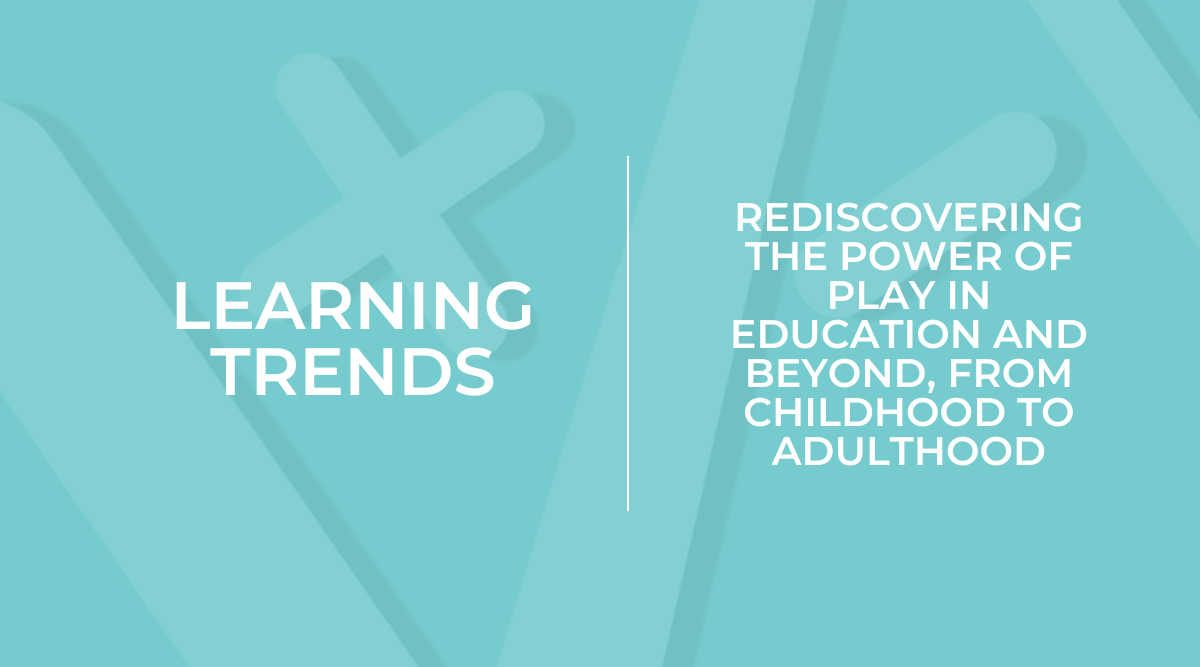Given the recent rise in attention to gamification in education we might think of it as a shiny new toy; however, the fact is it’s actually a long-overdue return to the natural way we learn. As children, we have the unfettered freedom to play and create and envision anything we want for ourselves, whether it is pretending we have an imaginary friend or deciding we’ll be an astronaut someday. This behavior is not only expected, but considered part of our learning process, and in its absence our parents and doctors would be concerned that we were not developing normally.
Natural Learning
Everything begins to change as we enter the educational system. Most people’s memories of school are characterized by sitting quietly at their desks while the teacher spoon-fed them information from a textbook. They later regurgitated this material during tests and quizzes for feedback in the form of a grade. Everyone was supposed to fit into this mold and those who didn’t were considered disruptive and even labeled troublemakers. More recently, however, the model has begun to shift, with educators recognizing that even the students who appear to have the shortest attention spans are engaged when they can access information via a digital platform (i.e. on their devices) and interact with other users in a competitive or collaborative way. Seen through an old-school lens, this may appear to be an unhealthy screen addiction, but beneath the surface a complex neuroscientific dance is occurring, one in which they are absorbing material they might otherwise consider difficult or boring.
Integrating Gaming
Employers have caught onto this with a vengeance, incorporating gaming aspects such as immersive experiences, along with leaderboards and points for immediate feedback and bragging rights, into their hiring ad onboarding processes, as well as ongoing trainings. These efforts have met with significant, measurable success – an uptick of 50% in productivity and 60% in employee engagement. Moreover, 79% of workers have reported that the gaming experience has contributed to increased purpose and motivation at their jobs.
This begs the question, why is play still excluded from most curricula for older children and adults? This antiquated attitude about learning seems to dovetail with traditional notions about life itself. As we grow up we are socialized to become more “responsible,” “mature,” and the – big one – “realistic,” which often translates to a narrowing of professional aspirations … and giving up on activities classified as play. This is despite the body of research documenting the role of play at any age in creating happier, more fulfilling lives.
Flow State
One of these researchers is Dr. Stuart Brown, who founded The National Institute for Play more than three decades ago. Brown defines play as a “state of mind that one has when absorbed in an activity that provides enjoyment and a suspension of sense of time. And play is self-motivated so you want to do it again and again.” He is describing a flow state, prominent in the work of psychologists Mihaly Csikszentmihalyi and Jeanne Nakamura, experienced by athletes and artists when they are completely immersed in their chosen activity. This is supported by the distinction, made by psychologist and learning expert Dr. Peter Brown, between the activity and the attitude accompanying it: “Two people might be throwing a ball … or typing words on a computer, and one might be playing while the other is not.” To tell whether one is in a “state of play” or not, Brown says, one must look at indicators such as body language. When one is in the flow they are freed from the “monkey mind,” or intrusive thoughts that normally plague us so they can focus on the task at hand. The flow state also has several emotional and physical benefits, including an increase in the brain’s pleasure center activity, creativity, and motivation, and the lessening of anxiety and symptoms of stress such as pain (i.e., tight muscles) and fatigue. Essentially, flow is the state of being one aims to achieve in meditation, however, while beginning meditators often struggle to clear or bypass intrusive thoughts, it happens effortlessly while engaged in activity one enjoys – be it gardening, playing basketball, or gaming.
Philosophy of Gamification
Moreover, the philosophy of gamification encompasses the belief that learning is a lifelong pursuit, not just in terms of experience but formal schooling – and the data bears this out. According to the National Center for Education Studies, 17% of part-time undergraduate students at four-year colleges are older than thirty-five; the number is far higher (61%) for two-year programs. Research also shows that the numerous benefits for people ages fifty and older returning to college are roughly the same as younger people, namely, a better financial outlook, mental acuity, and even increased health and longevity.
Clearly, there is an untapped market for gamification platforms in our educational system, particularly when it comes to adults. The good news is that popular culture is finally catching up to the work of Dr. Brown, resulting in a growing awareness of our need to embrace play at every stage – and every arena – of life, and making doing so in adult learning only a matter of time.



